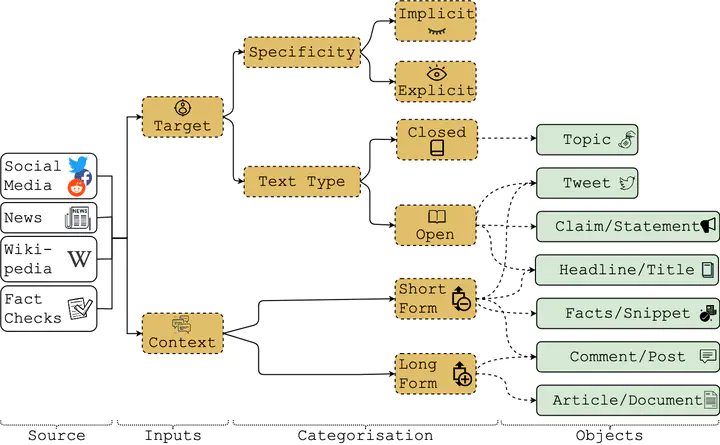
Abstract
Understanding the attitudes expressed in texts, also known as stance detection, plays an important role in systems aiming to detect false information online, be it misinformation (unintentionally false) or disinformation (intentionally false, spread deliberately with malicious intent). Stance detection has been framed in different ways in the literature, including (a) as a component of fact-checking, rumour detection, and detecting previously fact-checked claims, or (b) as a task in its own right; and here we look at both. While there have been prior efforts to contrast stance detection with other related tasks such as argumentation mining and sentiment analysis, there has been no survey examining the relationship between stance detection and mis- and disinformation detection. Here we aim to bridge this gap. In particular, we review and analyse existing work in this area, with mis- and disinformation in focus, and then we discuss lessons learnt and future challenges.